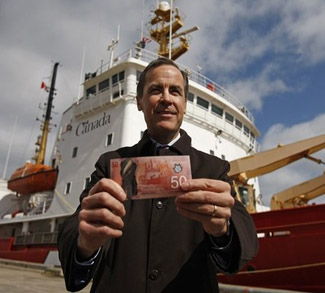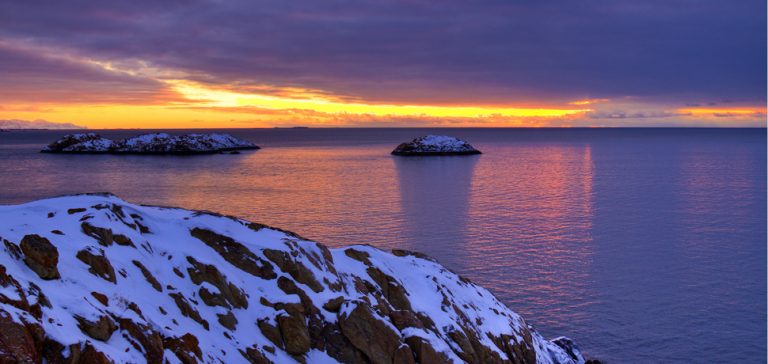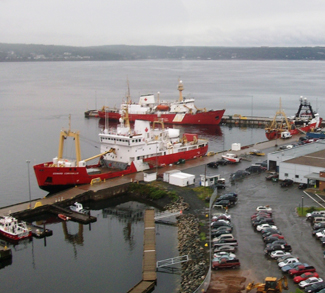Canada’s current government made a lot of noise in 2006 and 2007, calling for a total overhaul of Canada’s military presence in the Arctic. Is Canada really on its way to becoming an Arctic military power, or was that all said in the heat of the electoral moment asks Zachary Fillingham of the Geopoliticalmonitor.
There is a wide scientific consensus that the Arctic climate is changing, and the only question that remains centres around the exact time when seasonal ice will recede enough for the Northwest Passage to become a major international trade route. According to polar scientists like Dr. David Barber of the Circumpolar Flaw League, this may happen as soon as 2017.
There is also a wide consensus in expert and academic circles that the opening of the Northwest Passage will be a game-changer for the government of Canada. It will produce opportunities in the form of new avenues for resource exploration, international shipping fees, and economic development in northern communities. It will also bring a set of challenges, such as an increased risk of environmental disaster and lawlessness as well as the potential for international disputes on Arctic sovereignty. The prevailing logic tells us that most of these challenges will require an increased Canadian military presence in the area, and that’s precisely the message that has long been driven home by the Prime Minister Steven Harper of minority governments past.
Yet as time ticks away towards the year when the Northwest Passage finally frees itself of major ice flows, the holes in Canada’s Arctic defense policy remain big enough to sail an icebreaker through; that is, if any of them were actually available.
Prime Minister Steven Harper originally vowed to build three armed icebreakers during the 2006 election campaign, but subsequent events such as the Great Recession and its aftermath seem to have changed his mind. Now, Canada plans to build six to eight ice-capable Arctic Patrol Ships (AOPS) instead, though this project has been plagued with delays and as it stands right now the first ships won’t enter into service until 2019; a full 12 years after preliminary approval was granted. Moreover, these ships have been criticized by opposition politicians for their slow speed and their limited field of navigation, particularly the fact that they are only able to break first-year ice. It should be noted that one icebreaker survived the cuts and is still in the works: the CCGS John G. Diefenbaker, announced in 2008, it is expected to go into service in 2017.
It’s not just equipment that’s being scaled back from some of the more wide-eyed declarations that characterized Canada’s Arctic policy of five years ago. Ambitious plans to build an Arctic naval facility at Nanisivik have also been savaged. Slated to open in 2016, this facility will now primarily serve as a seasonal refuelling station for Canada’s new fleet of AOPS. This is a far cry from the original announcement of 2007 that envisioned a deep water port with an airport, a telecommunications network, offices, and living quarters. Nanisivik was supposed to serve as the lynchpin for Canada’s military presence in the Northwest Passage. Without any plans for a replacement, Canada will continue to lack a credible location to situate air, sea, and personnel in the Arctic. The reality on the ground implies that the Canadian government has shifted towards a more passive approach to Arctic defense.
However, this is not to say that the Arctic has completely dropped off the political radar. The Canadian government is still looking for cost-effective ways to assert its sovereignty in the region. Recent reports suggest that the Harper government is considering a proposal to buy three high-altitude unmanned drones to patrol the Northwest Passage. These could go a long way in monitoring international shipping traffic and possible breaches of Arctic sovereignty, though as other projects have indicated- there’s a huge gulf in Canada between announcements and deployment.
The Canadian government is well aware that it is falling short of what is required to create a credible independent military presence in the Arctic, so it may look to its neighbour in the south to help rectify the situation. The United States is feeling its own pinch on defense spending, making it reluctant to commit on its own icebreakers. Thus, it’s possible that Canada and the US could come together and pool their resources in a coordinated North American take on Arctic security ala NORAD. And perhaps this kind of American involvement is exactly what Canada needs to get the US on board for supporting Canadian sovereignty over the Northwest Passage.




